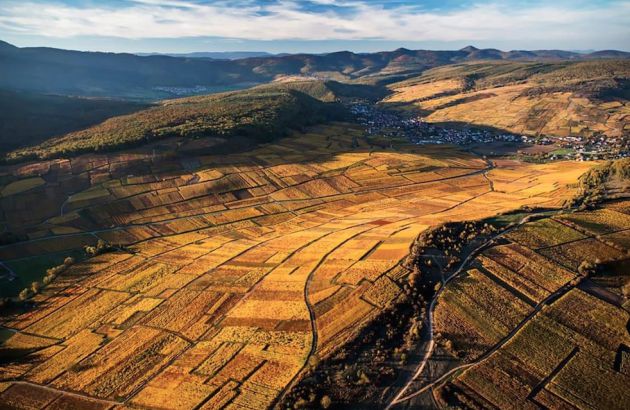
Alsace boasts optimum quality and quantity harvest
Conseil Interprofessionnel des Vins d'Alsace (CIVA) has announced optimum quality and quantity for the 2018 harvest.
Having benefitted from “outstanding conditions”, this year’s vintage would go down in history, as much for the unusual weather patterns it experienced as for the singular conditions of the harvest and the quality of the crop, said the industry body.
This year’s climatic conditions had been “rather awe-inspiring”, it added, with the first seven months of 2018 having seen the equivalent of an entire year’s worth of rainfall in Alsace, allowing the soils to replenish their water reserves.
However, in spite of this, the vines’ vegetative cycle remained undisturbed, it said.
Budburst occurred later than in previous years, flowering was particularly quick and ahead of schedule (late May), underlining just how early this vintage matured.
Most crucially though, the CIVA said despite the heavy rainfall, the grapes’ sanitary conditions were preserved.
“The summer months brought more stable, warmer, and, importantly, drier weather conditions. As of late July, temperatures soared, causing the grapes to mature more slowly, even in the lightest terroirs. The few hail showers the region saw had little impact since the high temperatures immediately dried the affected berries, allowing them to recover. Towards the end of August, occasional showers provided relief for the vines, allowing the grapes to ripen fully.”
Based on maturity checks, the CIVA has calculate the following harvest dates for 2018 - AOC Crémant d’Alsace 22 August, AOC Alsace 3 September for all grape varieties, AOC Alsace Grand Cru 3 September for all lieux-dits and grape varieties (unless otherwise requested by the Gestions Locales or local Grand Cru Committees) and for Vendanges Tardives and SGN wines (Sélections de Grains Nobles) 17 September.
Early grape maturity however did not have to mean a rushed harvest, the CIVA pointed out.
“The wine professionals took their time to get it just right. Indeed, thanks to the exceptional climatic conditions and health of the grapes, the harvest was spread over two months. This meant that maturity and acidity levels could be managed to an exceptionally high level of accuracy,” it said.
The Crémants were “exquisite despite their suppleness”, while the wines made from Muscat, Pinot Blanc, and Sylvaner grapes were “clean, fruity and delicious”.
The Pinot Gris and Noir however were the greatest successes of this vintage, with the former described as “structured and powerful” and the latter as “generous and intensely colourful”.
Gewurztraminer produced some very aromatic wines with spicy notes typical of a warm vintage, while Riesling required more patience and harvest dates had to be adapted to the terroirs, said the CIVA.
However, the warm days and cool nights in October allowed this late-ripening variety to reach optimum maturity and produce a fresh and fruity wine, it added.
The Indian summer which settled in Alsace in October and the excellent quality of the grapes enabled the production of a not insignificant volume of Vendanges Tardives and SGN, thus completing the range of Alsace Wines for this vintage.
Overall, producers were said to be “delighted with this year’s harvest”.
The exact figures for 2018 will be announced 15 December at the latest.




